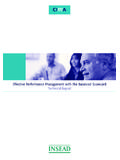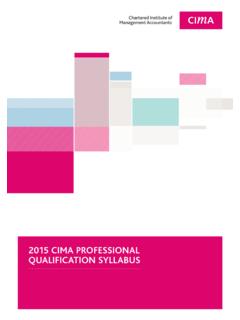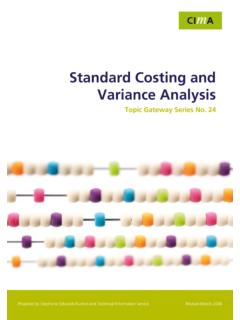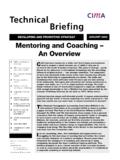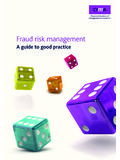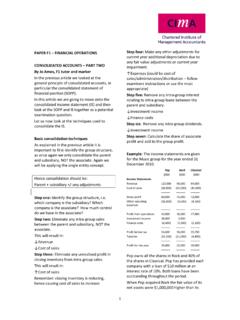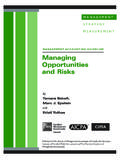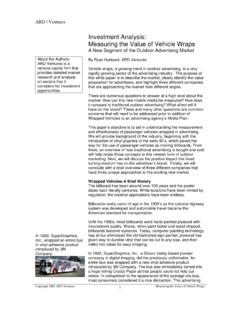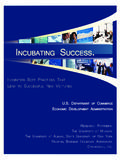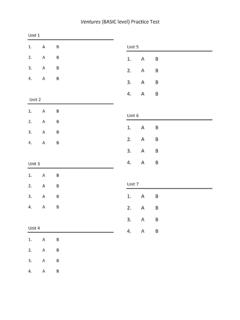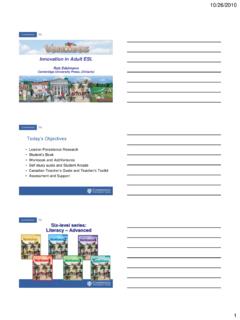Transcription of Group Accounting for Joint Ventures Topic Gateway - CIMA
1 Group Accounting for Joint Ventures Topic Gateway Series Group Accounting for Joint Ventures Topic Gateway Series No. 29 1 Prepared by Nick Topazio and Technical Information Service Revised in April 2008 Group Accounting for Joint Ventures 2 Topic Gateway Series About Topic Gateways Topic Gateways are intended as a refresher or introduction to topics of interest to CIMA members. They include a basic definition, a brief overview and a fuller explanation of practical application. Finally they signpost some further resources for detailed understanding and research. Topic Gateways are available electronically to CIMA members only in the CPD Centre on the CIMA website, along with a number of electronic resources. About the Technical Information Service CIMA supports its members and students with its Technical Information Service (TIS) for their work and CPD needs.
2 Our information specialists and Accounting specialists work closely together to identify or create authoritative resources to help members resolve their work related information needs. Additionally, our Accounting specialists can help CIMA members and students with the interpretation of guidance on financial reporting, financial management and performance management, as defined in the CIMA Official Terminology 2005 edition. CIMA members and students should sign into My CIMA to access these services and resources. The Chartered Institute of Management Accountants 26 Chapter Street London SW1P 4NP United Kingdom T. +44 (0)20 8849 2259 F. +44 (0)20 8849 2468 E. Group Accounting for Joint Ventures Topic Gateway Series 3 Group Accounting for Joint Ventures Definition and concept A Joint venture is defined in International Accounting Standards (IAS) as: A contractual arrangement whereby two or more parties undertake an economic activity that is subject to Joint control.
3 IAS 31, Interests in Joint Ventures , paragraph three IAS 31 prescribes two methods of Accounting for Joint Ventures : 1. The equity method. 2. The proportional consolidation method. The International Accounting Standards Board (IASB) and the Financial Accounting Standards Board (FASB) have agreed a roadmap for convergence of international standards and US Generally Accepted Accounting Principles (GAAP). This roadmap sets out the milestones that the FASB and the IASB have agreed to achieve in order to demonstrate standard-setting convergence. This convergence is one part of the process towards removing the requirement imposed on foreign registrants by the US Securities and Exchange Commission (SEC) to reconcile their financial statements to US GAAP. For more information on this roadmap please see: +Projects/Memorandum+of+Understanding+wi th+the+ As part of the convergence process, the FASB and the IASB have agreed to identify short-term convergence opportunities.
4 They have also agreed to look at their respective standards with a view to identifying major differences and they have issued statements to this effect. As they identify these differences, one or both of the boards issue proposals in the form of consultations to remove them by amending their standards. This is an ongoing process. The US standard that addresses the Accounting for Joint Ventures is APB 18, known as the equity method of Accounting for investments in common stock. APB 18 requires that the equity method is used to account for Joint Ventures . In December 2005, the IASB agreed to consider the Accounting for interests in Joint Ventures within the short-term convergence project. This Topic Gateway describes the developments to date and the likely changes to the financial reporting principles for Joint Ventures under IFRS. Group Accounting for Joint Ventures Topic Gateway Series 4 Context In the current syllabus, CIMA students will learn and may be examined on this Topic in paper P8, Financial Analysis.
5 Overview Historically, investments in companies that did not qualify to be classified as subsidiaries were carried at cost. Income from these investments was only recognised when dividends were received. By the 1960s, there was a growing tendency for companies to conduct part of their activities by taking substantial minority stakes in other businesses. They exercised a degree of control over these businesses which fell short of complete control. This trend led to a need for an intermediate form of Accounting which would be somewhere between Accounting for at cost and full scale consolidation. Companies such as Royal Dutch Shell used a modified form of consolidation. Here the investor s share of the investee s net assets was included in one line in the investor s consolidated balance sheet. The share of its results was included at only some levels of the investor s profit and loss account. Other entities preferred to use another form of intermediate consolidation, known as proportionate consolidation.
6 This involved bringing in the results, assets and liabilities of an investment on a line-by-line basis, but only to the extent of the investor s share. UK GAAP (FRS 9) and IFRS (IAS 31) have for some time permitted the use of these two methods of Accounting for Joint Ventures . However, it is likely that the equity method will soon become mandatory because of the convergence programme between IFRS and US GAAP. In practice Accounting for Joint Ventures in practice IFRS currently permits two methods of Accounting for Joint Ventures : Proportionate consolidation This is currently the benchmark treatment under IFRS. Proportionate consolidation should be carried out either on an aggregated line-by-line basis or as separate items. Group Accounting for Joint Ventures Topic Gateway Series 5 Where an aggregated line-by-line basis is used, the venturer includes its share of the assets, liabilities, income and expenditure of the entity within the corresponding items in its own consolidated accounts.
7 Where separate items are used, the venturer includes separate line items for its share of the total assets, liabilities, income and expenditure of the entity in its own consolidated accounts. For example, the line item creditors would contain a sub-heading share of creditors of Joint Ventures . Equity method Under this method, the investment is initially recorded at cost. The carrying amount is increased or decreased to recognise the investor s share of profits or losses of the investee after the acquisition date. Distributions received from the investee entity reduce the carrying amount of the investment. IAS 31 permits the use of equity Accounting but does not recommend it. This is because, in the IASB s opinion, proportionate consolidation better reflects the substance and economic reality. Illustration of equity and proportionate consolidation This section contains a simplified illustration of the impact on consolidated results of equity reporting and proportionate consolidation of interests in jointly controlled Ventures .
8 The investor or parent company, V Co, owns 50% of JV Co, the Joint venture . Exhibit A presents individual company financial statements for V Co and JV Co. Exhibit B illustrates the equity method and proportionate consolidation impact on the consolidated balance sheet and income statements. Group Accounting for Joint Ventures Topic Gateway Series Exhibit A: Individual Company Financial Statements Balance Sheets December 31, 2006 V Co JV Co Non-Current Assets 100 16 Investment in JV Co at cost 6 - Current Assets 34 12 -------- -------- Total Assets 140 28 Current Liabilities (5) (2) Non-current Liabilities (25) (6) -------- -------- Net Assets 110 20 -------- -------- Shareholders Equity b/fwd 70 12 Net income for the Year 40 8 -------- -------- Total
9 110 20 -------- -------- Income Statements For the Year ended December 31, 2006 V Co JV Co Revenue 120 30 Cost of sales (60) (16) Other expenses (20) (6) -------- -------- Net Income 40 8 -------- -------- Exhibit B.
10 Equity Method and Proportionate Consolidation V Co Consolidated Balance sheet December 31, 2006 Equity Proportionate Non-Current Assets 100 108 Investment in JV Co at cost 10 - Current Assets 34 46 -------- -------- Total Assets 144 154 Current Liabilities (5) (6) Non-current Liabilities (25) (28) -------- -------- Net Assets 114 120 -------- -------- Shareholders Equity b/fwd 70 76 Net income for the Year 40 44 -------- -------- Total

